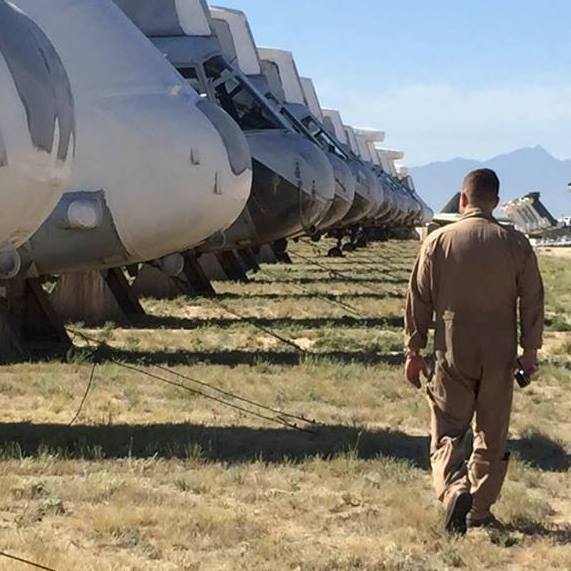I am worried that externally caused vibrations might damage my HDDs (NAS in the planning). The subway / metro runs under my building, and every time the train passes, this causes slight but measurable vibrations in the 50-100 Hz frequency range. It is more like a rumbling noise than the usual vibration of a passing train.
I’ve been researching the topic of vibration dampening on and off, and things like sorbothane popped up in my search. I also remember finding foam plates in an eye scorching yellow material.
My plan is to set up the case, fire up a measuring app on my phone (say phybox or the like) and test a few options. But I figured, I can’t be the first person to be guarding against outside vibrations. :D
Other than the usual 3-2-1 and backup regularly, what can I actually do? I would like to make sure that the lifespan of the HDDs doesn’t get too negatively impacted, so the chances of a catastrophic failure, as well as having to invest 1k EUR every couple of years is reduced as much as possible. Thanks!
I believe it doesn’t really matter much whether you want to protect the environment from vibrations of the machine vs. protecting the machine from vibrations of the environment - in both cases, decoupling the systems is what you want to achieve.
Eventually, you want to build a TMD: https://en.m.wikipedia.org/wiki/Tuned_mass_damper
I personally had to deal with the case of a large format CNC machine transferring stepper motor vibrations into an adjacent office via the wall-mounted brackets it was sitting on. People started to complain shortly after installation since the noise was very audible in the otherwise quiet working environment.
The solution involved placing the machine on a plate mounted via rubber decouplers (see https://www.dayco.com/en/product/decouplers) which in turn was mounted to a shop-built TMD using a rubber core sandwiched between two foam plates. The rubber core works as both mass and absorbs additional vibrations. It was built following a paper, but unfortunately, that was around 7 years ago and I’m not sure I’ll be able to dig the publication out again.
You can in fact simulate the TMD and do the tuning (see for example https://www.mathworks.com/help/simscape/ug/mass-spring-damper-in-simulink-and-simscape.html , though dedicated software packages also exist) but in all honesty, that will probably be overkill for your case.
Having your NAS sit on a 1/2" board of baltic birch plywood resting on a foam sandwich is probably going to do the trick in your case. You can easily create such a sandwich using foam, a rubber mat and some spray glue. Different foam densities will give different results and yield different “tunings” - you may have to play around with this a bit. I could imagine you’ll most likely even be able to skip the second decoupling step (rubber feet/decouplers), in the aforementioned case the second decoupling allowed for another set of frequencies to be dampened (via a different overall rubber hardness) but also brought overall amplitude down.
Don’t use super soft foam, as this will yield a wobbly base, something you probably want to avoid for your NAS. Also, make sure not to attach the base board to anything else apart from the foam, or you’ll transmit vibrations again. If you don’t like the appearance of the foam, you can build a small fence around it that goes up to the top of the base plate.
All that being said, there are also ready-made solutions like speaker dampening feet available: https://www.amazon.com/Tertullus-Speaker-Isolation-Feet-Anti-Vibration/dp/B09QC2L7N3
Most of them are made to decouple subwoofers, so they might fit into the frequency spectrum you specified. Those couls certainly be an affordable and rather quick way to solve the problem.
Awesome, thank you for taking the time to include so many details. I can see myself easily building the aforementioned plywood+foam sandwich platform, sounds like a more solid platform to put the NAS case on (mid tower).
The subwoofer feet also look fun, I remember reading about them back in the reddit days. After revisiting my notes and the post, there were some concerns about harmonic vibrations and oscillations from the drive having an negative impact. But reading it again, I don’t think that this will be a problem.
I think I’ll start with the feet and see how they perform while I source the plywood and foam. Maybe there are also some foam / rubber mounts for the disks themselves, I should be able to find suitable one as it’s a more common problem to have.
Do you have recommendations for how I should best measure the results? Preciously I looked into the raw acceleration data to see how strong the vibrations are, and then I looked into the spectrum to find the vibration frequencies. All with consumer / noob friendly tools (phyphox), hoping that the change will be measurable and the results - meaningful.
Honestly, I think your approach using the MEMS accelerometer in your smartphone is fine - just make sure to tape the back of your phone firmly to the board to get a rigid connection. This will be of particular importance if you want to do any kind of tuning, as you might measure spurious frequencies if the device is not properly attached.
Smartphone accelerometers are actually used in civil engineering / industrial applications to determine frequencies of e. g. bridges or check for bearing wear. If you are interested, here are some papers:
https://www.scielo.br/j/lajss/a/ZnWZ8T86HHBLFvdksCh7g9s/?lang=en
https://www.mdpi.com/1424-8220/19/14/3143
https://www.mdpi.com/1424-8220/15/2/2980
https://www.ncbi.nlm.nih.gov/pmc/articles/PMC9824767/
That being said, the accuracy of the frequency readings is not super important for your application, as what you are after is pretty much only a reduction in amplitude. I would assume spinning hard drives show different responses to different vibrational frequencies, but I did not have the time to research this myself. However, here are two papers that explore what you are trying to do, which I will link since they also mention a few related papers that show the impact of vibrations on hard drives:
https://link.springer.com/article/10.1007/s00542-012-1592-z
https://content.iospress.com/articles/shock-and-vibration/sav00458
This would in theory incentivise to optimize dampening certain frequencies, but I suspect you will quickly get into the realm of overengineering / premature optimization, as the dampening might be good enough to tune out all relevant frequencies without simulations or tuning etc. However, it’s still certainly a worthwhile effort for educational purposes though.
As for a practical approach, I’d probably simply start out with some super cheap foam obtained at the nearest home improvement or crafts store and see how a sandwich using that affects signal amplitude. You could even introduce artifical vibrations using a DC motor with a weight mounted off-center on the shaft, which you can get ready-made for next to nothing on eBay (“vibration motor”, ~ $2).
If you want to get into tuning / experiment / analysis territory, I would like to include additional motivation. Not only might proper decoupling increase the lifetime of your drives, but it could also improve performance. I will include the following video as humorous proof of that:
https://www.youtube.com/watch?v=tDacjrSCeq4
P.S.: I firmly believe that research should be freely accessible, so I feel obligated to mention that all papers linked above are, if not available for free on their respective webpages, obtainable via a certain scientific hub.
You probably don’t need anything. Laptops using disk have been in use in bumpier environments for decades prior to SSDs.
But let’s say you do. Bolt some eye hooks to the top of your case and suspend it with paracord. It’ll turn vibration into sway and your disks will happily keep on turning.
Replace them with SSD’s?
Your seek-time drops to near-zero,
your throughput increases to SATA ( or your motherboard’s SATA controller ) speed,
and you become absolutely-immune to such vibrations.
I cannot understand using rotating-disk drives in any notebook machine, under any circumstances, ever, for the last decade or so.
_ /\ _
They’re taking about a NAS though?
As long as you use the right kind of SSD, there aren’t any problems with doing this.
Oh for sure, it’s just a loot more expensive
Just rob a few banks, go to prison, meet a coke dealer, get out of prison and start selling coke, rise up the ranks until you can kill the current leader and become a drug kingpin, and finally realize that you still don’t have enough money for it because they are expensive as shit.
I might have to downvote you. After all that, you could probably afford one. Forget a RAID though.
Can you elaborate on “the right kind”, do you mean the NAS grade ssd’s?
Yes, there are NAS grade SSD’s that can be used.
I have 3 Intel S3700’s, one for the OS and two 400GB ones for a mirror pool (might do a raidz1 as well). But getting anything in a serious capacity (8-12 TB of usable storage) with datacenter SSDs is really expensive. :(




